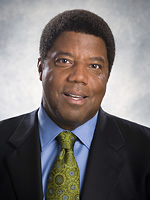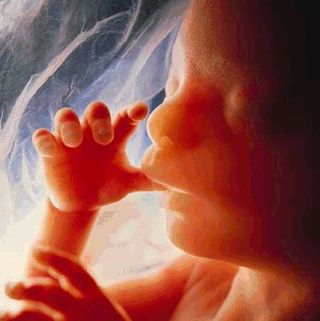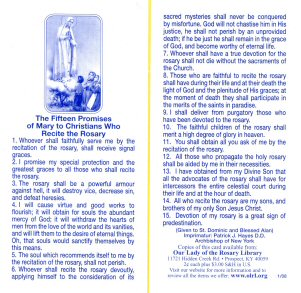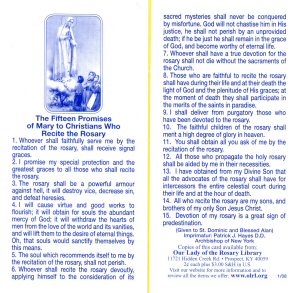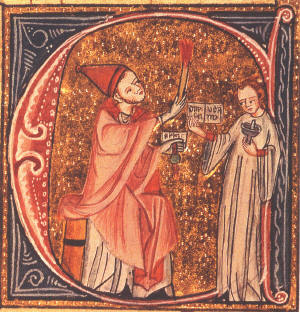According to an agreement worked out last week, Catholic Healthcare West (CHW) has until tomorrow (Tuesday, December 21), to respond to Bishop Thomas Olmsted’s requirements concerning how it operates St. Joseph’s Medical Center in the Diocese of Phoenix.
Whatever happens in that case, the story just got a lot bigger.
Because CHW operates hospitals throughout California, Arizona, and Nevada, it was likely that new stories would turn up, either in Phoenix or in other western dioceses. I predicted as much in part two of this series (here’s part one, also).
I’ve been planning on doing some further scrutiny of CHW to see where the story might lead next, but the folks at American Life League have devoted the last few days compiling a dossier on CHW. I was fortunate enough to receive a couple of embargoed drafts of the report (which may have changed since the most recent one I got), but the embargo is now off, and so here’s a summary of ALL’s findings. Take it away, ALL . . . !
Catholic Healthcare West and its Anti-Catholic Activities Catholic Healthcare West (CHW), headquartered in San Francisco, CA, is a system of 41 hospitals and medical centers in California, Arizona and Nevada. Founded in 1986, it is the eighth largest hospital system in the nation and the largest not-for-profit provider in California. According to its website:CHW is committed to delivering compassionate, high-quality, affordable health care services with special attention to the poor and underserved. The CHW network of more than 7,500 physicians and approximately 40,000 employees provides health care services to more than four million people annually.
CHW member hospital St. Joseph’s of Phoenix, Arizona, became steeped in scandal earlier this year when the head of the ethics committee, Sr. Margaret McBride, approved the abortion of an 11 week preborn baby whose mother suffered from pulmonary hypertension. Bishop Olmsted, prelate of the Diocese of Phoenix, investigated the case and after interviewing Sr. McBride, informed her that she had excommunicated herself by approving the abortion. Since then, CHW has defended Sr. McBride’s decision, and after months of debate, Bishop Olmsted issued a letter to CHW declaring his intent to withdraw the Catholic identity of the hospital unless CHW met three specific conditions.
Prompted by Bishop Olmsted’s stern warning, American Life League conducted its own investigation into CHW’s activities and discovered that its scandals are not limited to one abortion in one member hospital. In just two days, ALL found that
• CHW Arizona’s health care plan covers oral contraception and diaphragms
• CHW has granted money to at least six organizations that promote abortion, birth control and/or homosexual lifestyles
• At least one CHW member hospital promotes Planned Parenthood on its website, and another lists the provision contraception as a service
• 12 CHW members (as of 2001) performed tubal ligations
• 20 members currently refer for vasectomies by staff physicians on their websites
• CHW funded and helped create the “Healthy San Francisco” health plan, which covers elective abortion
• CHW CEO Lloyd Dean made donations to the Obama campaign and gave strong endorsements for the USCCB-condemned Patient Protection and Affordable Care Act.
ALL’s report goes on to substantiate its findings by providing detail—quotations and links—and you can read it here (.pdf).
It will take some time to drill down into all the citations the report provides and see how well the research holds up (and what else emerges), but CHW has some serious ‘spaining to do.
Which is not to say that they can’t.
For instance, according to the dossier, “CHW Members Saint Francis Memorial Hospital, Sequoia Hospital and St. Mary’s Medical Center donated $267,704 to 17 organizations in 2010. At least five of these grantees are actively promoting ideologies antithetical to Catholic teaching.” It then cites one such entity as “San Francisco Health Plan,” which covers abortion, birth control, and other family planning services.
Okay, so San Francisco Health Plan is covering evil procedures. But remember where we’re talking about: San Francisco. They’re crazy enough up there—and in California generally—that there very well might be a local law requiring all health plans to have such coverage. If so then CHW could argue that their action involved only remote material cooperation with evil which would potentially be justifiable according to Catholic moral theology if the good done by the health plan overall was more than the evil done by certain individual procedures it covers.
In other words, they might make the argument: “We don’t approve of abortion and contraception services, but given the local law there was no way to extricate such services from a health plan, and the health plan itself saves more lives/does more good than the lives it takes/evil acts it promotes. We therefore considered this a legitimate act under Catholic moral theology’s principles concerning remote material cooperation with evil.”
But there might not be such a law. And this might not have been their intent. Though even if all that is the case, this looks really bad.
Another point singled out in ALL’s dossier concerns a medical plan offered to employees of CHW facilities in Arizona. According to ALL, “CHW’s 2008 Arizona Medical Plan and $250 Deductible Plan cover oral contraceptives and diaphragms.”
True. But bear in mind that CHW isn’t itself an insurance agency. This is a policy offered under the auspices of a professional insurance agency (a little digging reveals it to be Aetna), and so CHW has the potential defense, “This was the best policy we could find to offer our employees, all things being considered. We don’t approve of oral contraception and diaphragms, but we could not find a policy that didn’t cover these yet still offered decent benefits. Therefore this also was justified based on the principles regarding remote material cooperation with evil” Or there even could be an Arizona law requiring insurance plans in the state to cover these (states get to make such laws).
Or there might not be such a law. Or this might not have been CHW’s motive. And there might have been plenty of Arizona-legal insurance plans that offered good benefits without covering oral contraception and diaphragms. Still: CHW needs to explain, and this looks really bad.
And then there’s this: The ALL report shows that twenty (almost half of!) “CHW member hospitals and health centers refer for vasectomies by staff physicians on their own websites.”
For example, here’s the vasectomy referral page for the St. John’s Regional Medical Center/St. John’s Pleasant Valley Hospital in Oxnard, California.
Now, it may be the case that none of the vasectomy services are occurring on the grounds of St. John’s Whatever. But notice that all seven of the physicians listed are affiliated with St. John’s. Even if they weren’t though, why is a Catholic hospital (apparently formally one, given the name “St. John’s,” and not only by virtue of being run by Catholic Healthcare West) referring people on its web site to where they can get vasectomies?
The “remote material cooperation with evil” business wouldn’t appear to work here. (Not in a nation that has First Amendment protection of freedom of speech and medical conscience laws). The only explanations I can think of are either, “There’s a law requiring this,” or, “We didn’t know. Our web guys put that up. Or it was the local hospital’s decision to put that up. They did it. Upper CHW management didn’t know about it. It’s not our policy, and it will be swiftly taken down.”
Yeah. . . . Maybe.
We’ll see, won’t we?
Bottom line is: There is a huge amount of smoke here, and there appears to be a fire of a systematic nature going on underneath it.
This story will get bigger, and CHW has a lot of explaining to do.
What do you think?

